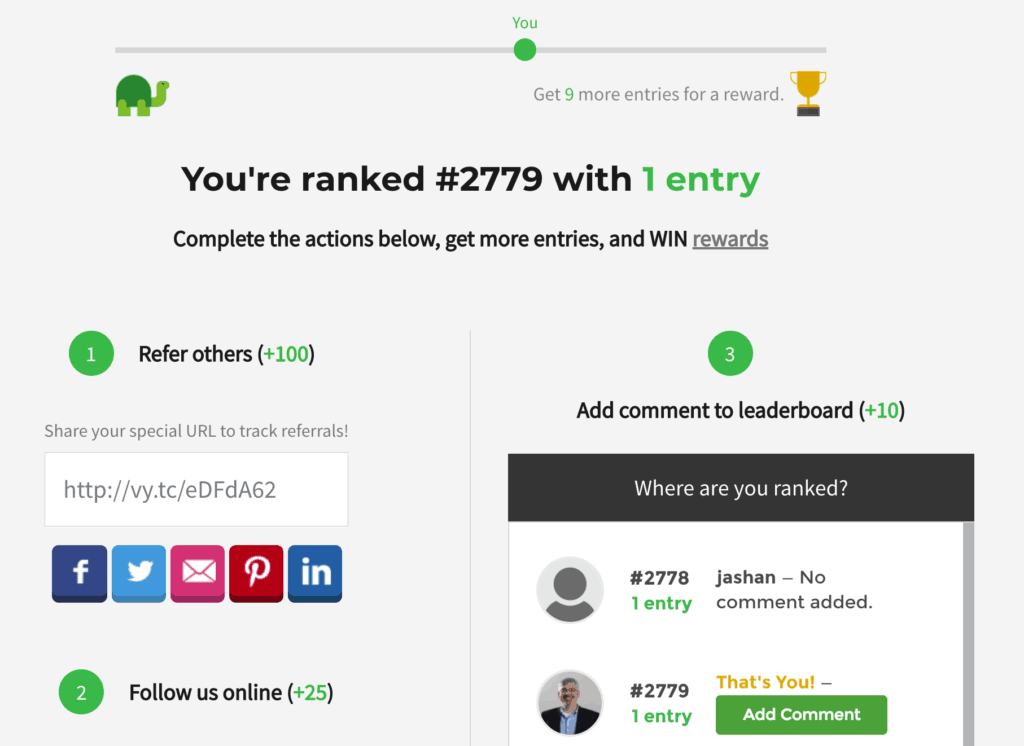In the beginning, there was robot. Well, since GoWP’s beginning in 2014, our robot has always been part of our identity.
When we started GoWP, I wanted a “mascot” incorporated into the logo. I worked at a startup many years ago that had a dog (“Rover”) as a part of its company brand and I saw first-hand how prospects and customers became attached to it.
They loved Rover.
They clambered for Rover t-shirts and swag and it really helped the startup stand out in a crowded field. So I wanted to see if we could do something similar.
We came up with the idea of a robot because we are a WordPress maintenance and support service. The idea of a robot behind the scenes taking care of your WordPress site while you focus on your business is appealing. And it’s the value we deliver.
With the help of Elizabeth Schorr and Isabel Bendana, two super talented designers, we refined the robot concept and created a few different logo options.

Based on the feedback from the team, we eventually settled on the current bot and logo.
It’s just that, although the robot was a part of our identity, we never gave it a name. He was just known as…the GoWP Bot.
For more than a year, we had been talking internally about having a contest to ‘name the bot’ but it never made it beyond the idea stage.
After signing up to sponsor WordCamp US, I realized we had the perfect opportunity to create a fun, competitive contest that would also help us engage with WordCamp attendees. And ultimately, our robot would finally have a name. 🙂
I want to share with you what we did, how it worked and what we learned so you can skip some of the learning curve and jump start your own contest.
What is a Viral Contest?
A viral contest uses gamification to reward participants for publicizing the contest and referring other participants. It’s a way to build viral growth for your audience, email list and potentially, your customer base.
Viral contests work because they appeal to our desire to be included and our competitive nature. And they do this by encouraging social interactions. It’s human nature for people to want to be involved, and a viral contest not only allows them to be, it incentivises their involvement by rewarding them with additional chances to win. The result is a contest that exponentially grows bigger.
For brands, viral contests build an engaged following that can result in new leads and customers. Honestly, it’s a very unique form of marketing and can be extremely powerful when done right.
Our ‘Name The Bot’ Viral Contest
After deciding to conduct the contest, my first step was to choose a viral contest tool.
I evaluated several tools and decided on VYPER because of the features it offers and because I was somewhat familiar with it — I had entered other contests that were built on the platform. I particularly liked that we could run a “Pick the Winner” contest for the name we liked best as well as a “Leaderboard” contest to reward people who helped us spread the word. This hybrid approach felt like a win-win for what we were trying to achieve with the contest.
Knowing that we would be talking about the contest in person at WordCamp, I purchased NameTheBot.com to make it easy to remember.
After redirecting the domain to our contest landing page, I was ready to dig in and setup the contest. VYPER’s system guides you through the setup process step-by-step:
We decided to offer a grand prize of a $500 Amazon gift card for the contestant who submitted the best robot name and robot themed prizes for first, second and third place on the viral leaderboard.
Visitors would enter the contest by visiting NameTheBot.com and completing a quick form. We asked for name, email and a proposed name for the bot.
After entering this info, participants were directed to their personal contest page that showed their ranking on the leaderboard and offered them additional ways to increase their ranking and chances of winning:
Contestants were awarded extra points for things like confirming their email address (which is obviously important for us to achieve our goal of email list growth) as well as sharing the contest on social media.
In our case, we only added Twitter and Facebook, but the platform can also include Instagram, Pinterest, and more.
We also awarded contestants extra points for sharing the contest inside a Facebook Group. This worked really well for us as it promoted the contest with large groups of like-minded people.
Once the contest was ready, we set the contest length for three weeks and decided to build some buzz leading up to WordCamp US by launching it a week before the event.
That turned out to be a success, thanks to our wonderful customers and colleagues who shared the contest with their networks — generating over a thousand qualified entries in the first few days alone.
Many WordCamp attendees already knew about the contest and had entered before the event. The contest gave us an entry point to meet and talk about GoWP with hundreds of attendees over the course of the conference.
After the event, we sent several more emails to remind participants about the leaderboard and encourage sharing. I found myself digging into the VYPER blog for best practices and sample email content.
The Results
Over the three week contest, we gathered almost 3,000 entries and some absolutely fantastic name ideas.
Of course, we did have some bogus entries but we expected that. I ran all of the emails through Kickbox to verify the addresses and separate the fake accounts from real people. It’s a very affordable solution to a problem that could be costly.
We were also able to grow our social media audience — something that’s really important to us with the amount of content we distribute. And we even added a few new customers before the contest ended, which was awesome. 🙂
But we had a specific purpose for this contest and we achieved it — we found the perfect name for our robot! More on that later…
What I Learned
1. Keep it simple.
As much as I loved the idea of a hybrid contest — merging the”pick the winner” approach with a Leaderboard contest— it confused some of our contestants. If I were to do another contest, I’d choose one format or at least provide a better explanation of the rules and how to participate. The “pick the winner” format was straightforward but after entering, some participants were put off by the addition of the leaderboard for viral sharing and earning points.
2. Pick the right tool for the job.
When evaluating the contest tools, I didn’t really consider how the platforms would handle gathering entries in person. I just assumed it would work. But although VYPER is an excellent tool for conducting an online contest, the platform had some difficulty with the live event format when we were taking entries at our WordCamp US table.
VYPER has strict algorithms in place to prevent cheating and we found that after collecting several hundred in-person entries at WordCamp, contestants were being automatically disqualified. They were sent an email to confirm their email address but when they clicked the link in the email, many were shown a “You are disqualified” message. Apparently, VYPER thought so many entries from the same IP address must have been a cheater trying to game the system.
I had to manually go in and mark each one “Not a cheater.”
This was painful. And even worse, the confusion over being disqualified resulted in a few angry contestants.
Which leads to the next lesson…
3. Contests may be fun but they’re also serious business.
Sure, a percentage of participants enter the contest for fun with no expectation of winning — but there are many others who really want to win. And any of us will get upset quickly when we feel like someone else is cheating or we don’t have a fair shot at winning.
I received quite a few direct emails during the contest — some were lobbying for their name to be chosen, others called out participants they suspected of cheating and some wanted to vent about being unfairly disqualified.
There are even regulars who enter as many online contests as possible. And, a lot of the regulars know one another, it’s like one big, competitive community.
None of this is really a problem, it’s just part of running an online contest. People can be passionate about winning and I get it. Because of this experience, I’ll be better prepared to handle certain situations next time.
4. Choose appropriate prizes for your target audience.
I cannot stress how important it is to choose the right prizes for your contest. The prizes you offer will dictate the quality of prospects that enter.
Honestly, we could have done a much better job with this.
We chose an Amazon gift card as the grand prize and various robot-themed toys, prizes that have a very broad appeal. We could have increased signups from web professionals and WordPress website owners by choosing prizes that directly appeal to this more defined audience.
The good news is that almost everybody knows someone with a WordPress website — so they can help spread the word about our service.
5. Follow-up is critical.
It’s important to follow-up throughout the contest and after it ends so your email list doesn’t go cold. We emailed contestants throughout the contest to let them know their place on the leaderboard and to remind them how to increase their chances of winning.
We also quickly followed-up to let contestants know the winning name and offered them a discount for our service. VYPER offers email integration with MailChimp, ActiveCampaign, Drip and others but we use Intercom so we had to manually import the addresses which was easy. We tagged the contacts in Intercom so we could continue to communicate with them and refer back to the contest when appropriate.
Next time, I’ll add a brief welcome series so contestants can better understand who we are and what we’ll be sharing with them. I think that will help make the transition smoother.
Enough Already, What’s the Robot’s Name?
Drumroll please…
The vote was unanimous. When we saw this entry, every one of us here said, “yep, that’s him.” It’s got the obvious link to WordPress, shows a little sophistication and a little quirky fun.
We absolutely love the name and can’t wait to incorporate Presston into more of our service and marketing efforts. A special thanks to Keith Homel for submitting the winning entry. 🙂
Next Steps
Here are a few steps you should consider if you want to run your own viral contest:
- Set a goal. Are you trying to get more email signups, more social media followers, a name for your robot? Be specific and know right from the outset what you want to achieve. This goal will dictate the type of contest you’ll run and will make the steps that follow easier.
- Decide on a prize. Will you give away your own services, partner with someone to create something unique, or offer a prize from a marketplace like Amazon? Whatever you decide, make sure it’s relevant and valuable to your audience.
- Identify which platform works best for your needs. There are several SaaS tools that offer viral contest capabilities. You’ll need to identify your own needs before you can decide which one will satisfy them. I recommend picking three tools and signing up for a free trial (or a limited time) so you can fully test them.
- Plan the contest launch. This can be an email to your biggest advocates, all of your customers or your entire prospect list (or all of the above). You might consider testing your contest announcement with a small audience before sending it out to everyone. This will allow you to measure performance and optimize the message before it’s in front of a wide audience.
- Schedule follow-up emails. I recommend writing and scheduling all of your emails before the contest starts. These emails are critical for achieving viral growth so you don’t want to create them on the fly. Spend some time upfront to ensure contestants will open and read your messages.
Conclusion
I could not be happier with the results from our contest. We saw great engagement from contestants who became genuinely interested in our message, brand and services.
We could certainly make improvements for next time but, overall, this was a fantastic experience.
The choice of platform is obviously going to be based on your own requirements but the gamification and psychology that makes it work will not. If you want people to get excited and involved, it has to be about them, not you.









